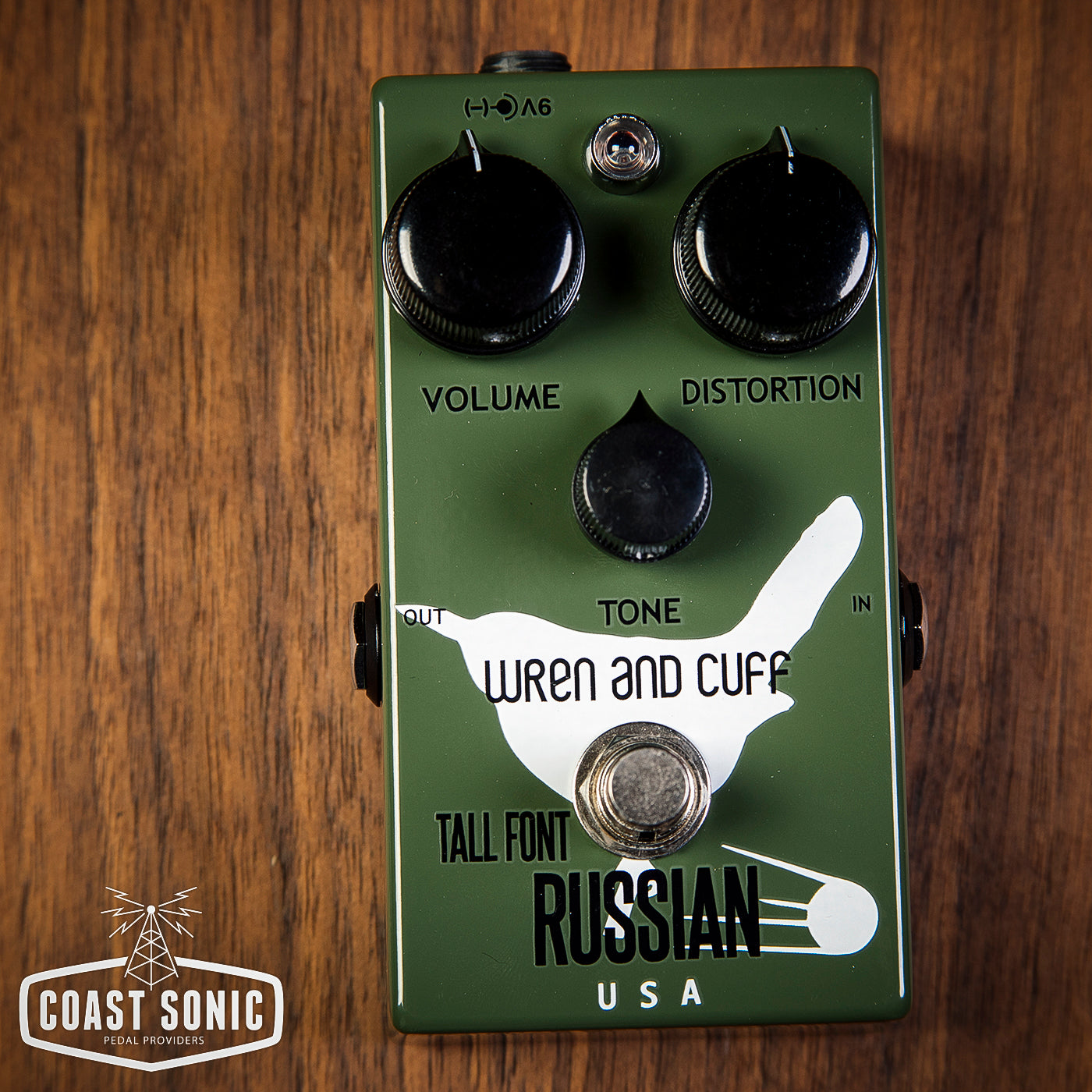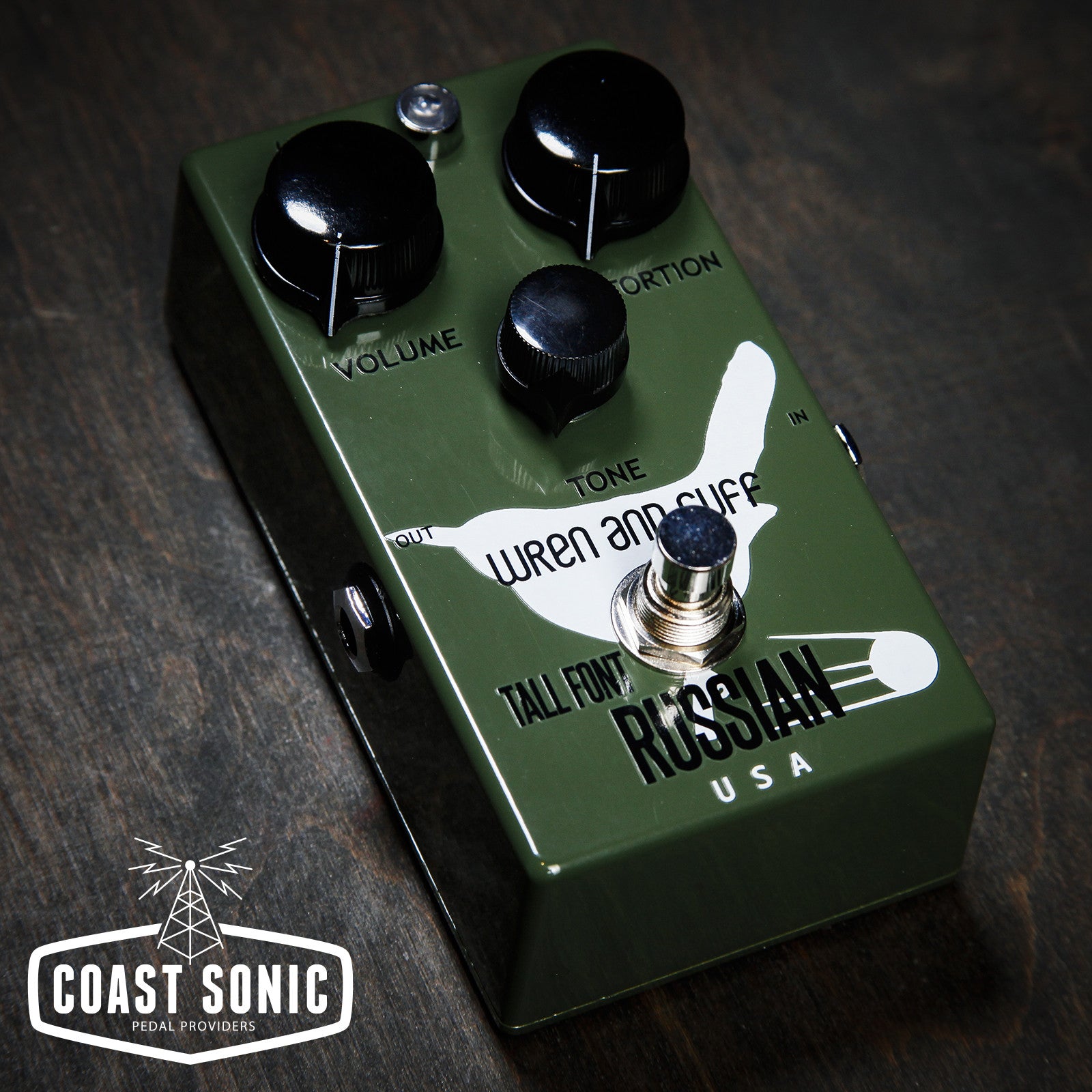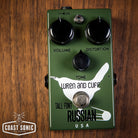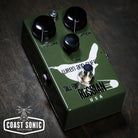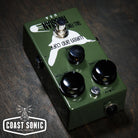Wren and Cuff Tall Font Russian
Couldn't load pickup availability
Maker: Wren and Cuff
Model: Tall Font Russian
Condition: New
Description:
I have literally hand-wired (meaning point-to-point, no proper circuit board, on perf-board) over 150 muff and muff-related pedals in the early days of Wren and Cuff, then many many more after getting proper PCB boards. Why I mention this is because as you might imagine, my ears have become very accustomed to the nuances and intricacies of these pedals.
I’ve spent many hours digging for some slight difference between a vintage pedal I love and one I’m building for one reason or another to be sure I could truly nail the sound. I’ve had my employees flat out saying, “Sorry man, I just can’t hear a difference”, then giving me the, man, this guy is crazy look. Why I mention this is to say that after all the muff type pedals built under my belt, The Tall Font Russian was the toughest pedal to nail.Why did I choose the Tall Font S****K version to recreate? After a conversation via email with an acquaintance who plays in a very successful band this quest began.In his words, after being asked about his affection for these pedals he said: “Yet to find anything close. And (after) hearing a lot of players, rarely do I like their distorted/fuzz sounds. I really think there is a reason the s****ks are so collectable. I prefer the first series green ones with the screws on the side. The series after this had them on the top. I don’t like the civil wars or any others besides the green ones. In a pinch, I’ll use a screws on the top one, but it has to be green.”
I was curious why he didn’t follow the standard, civil war muffs are the best Russian muffs belief. After some investigation I found that they’re very, very, similar in tone, parts, and values. Very close. But to me, the highs are more present and clear in the Tall Fonts resulting in an openness in the highs unique to this pedal. They’re generally not as dark sounding, which gives them a slight gritty edge not found in the war muffs. Some dislike this trait but to me there is a rudeness to them that sets the TF’s apart from the C-War.
As usual with our muff-type pedals, I found that transistor selection was very important. After removing the transistors from vintage units then testing the gains I found some inconsistencies between vintage units. After some obsessive listening tests I went with one particularly sweet sounding pedal and matched the gains as closely as possible using a mix of trannies. I also was surprised to find an important biasing resistor and a capacitor that were a much different value than stated on the components and schematic. Discovering this helped to find that sound I was looking for!
One of my favorite traits is a “boxy” quality to the sound that was the toughest thing to reproduce. Wish I had a better way to describe it, but “boxy” is what it is to my ears.
It almost sounded right, but I couldn’t get a certain growl I heard on the vintage pedal and the boxy thing still wasn’t quite right..Finally, I tested the pots and found the actual vs. stated pot values were over 30% “off” in some cases. IMO this inconsistancy is partly responsible for one unit sounding particularly sweet and another sounding so, so. In other words, those absolutely crappy pots created a happy accident. After custom tweaking those pots, I realized that this was one of the things responsible for keeping the low-mid range from getting to mucky and is also a factor in the more over-drive type quality these Russians can produce. I found the growl! The kooky values found can’t be purchased as such so we have to mod each pedal’s pots ourselves to get the desired values.
As far as I know, we’re the only company that goes as far as to modify the pots for a S****k clone.
This boxy-growl also helps make them particularly great on bass, and fantastic for raunchy, less friendly guitar tones ala The Black Keys, White Stripes, Mars Volta, and many others seeking a nasty F-You snarl (not saying the afore mentioned bands use these exact pedals, just using their tones as a reference). With many other desirable muffers (and our Tri Pie 70’) the goal is warm, smooth and buttery, but the TFR has a different goal in mind. There is a growl and raunchy yet truly musical sound produced by these ugly green beasts. The lows have an overdrivey compression that keeps things tight, and the highs have a rich upper-harmonic thing going on that’ll make one understand the affection some have for this pedal. The mids have the standard muff-scoop but it is not as pronounced as some of the other generations. Add to that a less gainy/fuzzy tone overall and you end up with a unique muff with a character all its own. Good stuff.
Sadly, my quest for this tone resulted in a couple of butchered vintage pedals, but the end result was worth it.
The bummer about the vintage Tall Fonts? Cheap, cheap, cheap plastic jacks mounted to the circuit-board that beg to be given a hard knock resulting in a cracked circuit board. Equally cheap pots (knobs you turn) that feel flimsy, break easily, and barely hold the knobs in place making it rare to find one with all three original knobs. Non-true bypass tone-suck, no power supply jack, huge footprint, and heavy as hell round off the list of negatives the originals carried.
In short, they could be a big pain in the ass.
Our TFR features:
• True hard-wire mechanical bypass
• Standard “Boss-style” 9VDC (-) tip power supply jack or 9V batt operated
• Small foot-print
• The best jacks available mounted off the circuit board
• Alpha pots
• 3PDT foot-switch for real true-bypass operation
• Genuine USA Davies “Daka-ware” knobs
• Expert clean, tight, wiring that makes the insides just as beautiful as the outside
• Incredible attention to detail

